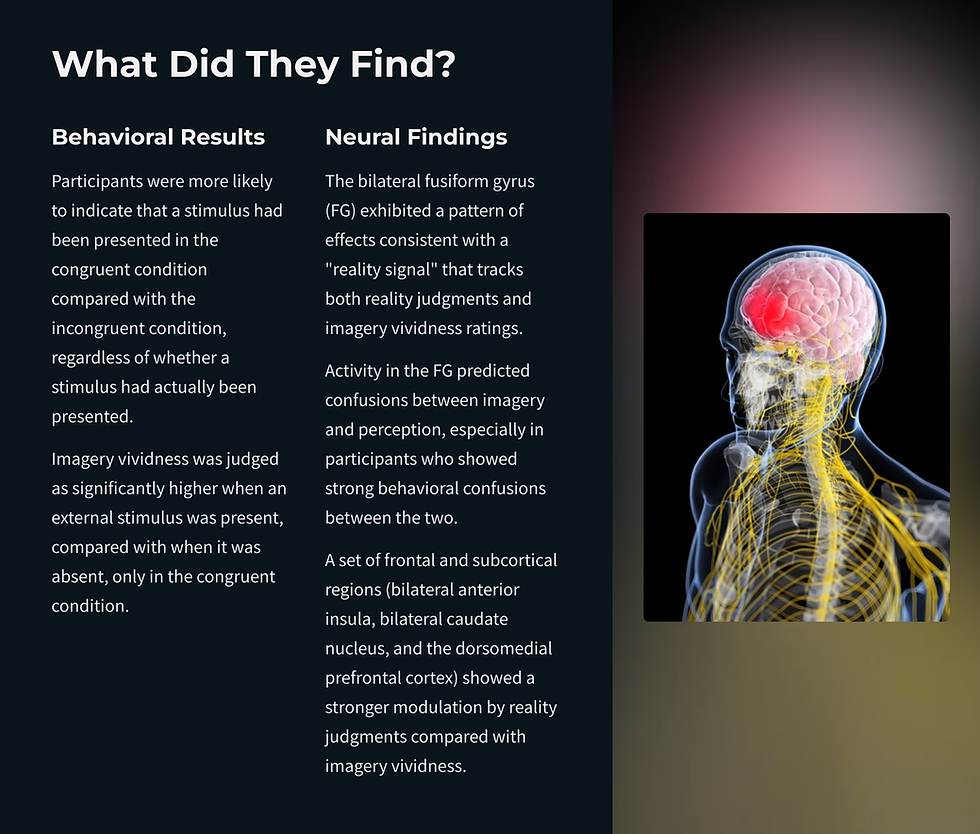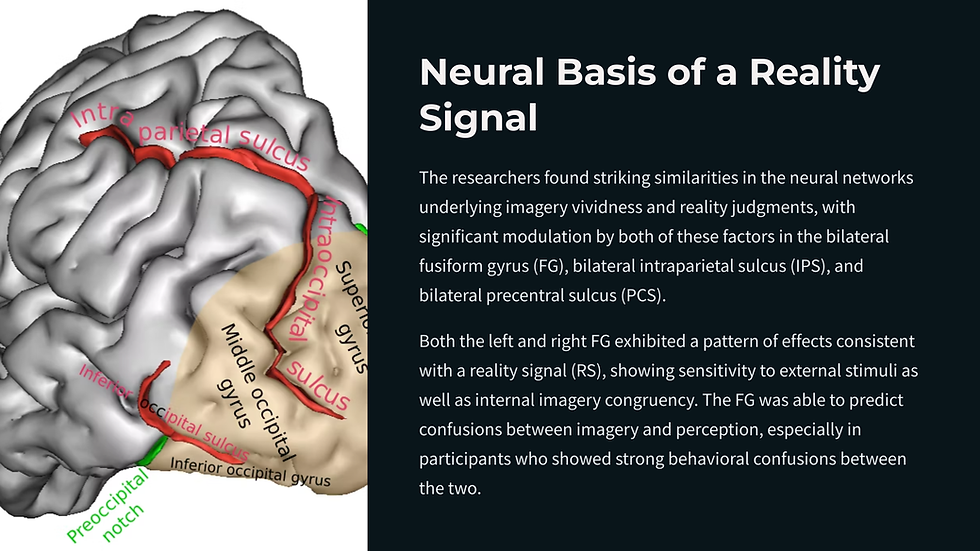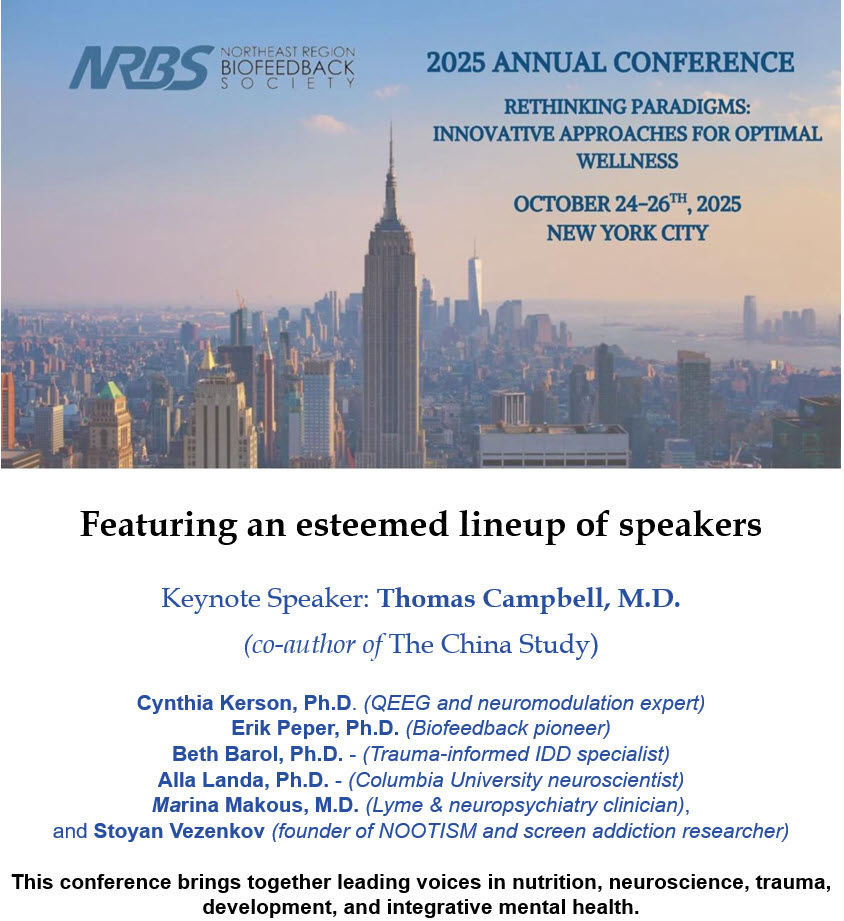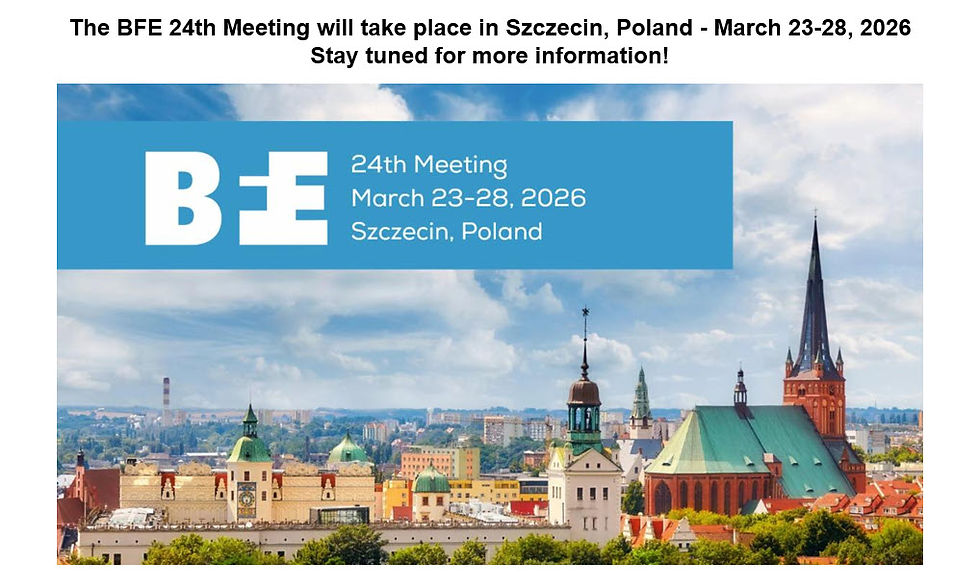5-Min Science: How We Distinguish Reality from Imagination
- Fred Shaffer
- Jun 11
- 4 min read
Updated: Aug 10

Nadine Dijkstra, Thomas von Rein, Peter Kok, and Stephen M. Fleming have made a profound discovery that illuminates one of the most fundamental aspects of human consciousness.
The Fusiform Gyrus Distinguishes Imagination From Reality
Their work identifies a specific neural mechanism that our brains use to distinguish the vivid world of our imagination from the tangible reality we perceive through our senses. The core takeaway from this research is that the brain appears to make this critical distinction by performing a surprisingly straightforward calculation: it monitors the raw strength of signals within its perceptual systems.
This process is not about having a special "tag" for imagined thoughts, but rather a continuous assessment of sensory evidence. Imagination and perception are not isolated processes; they are deeply intermixed within the brain's sensory pathways. The combined intensity of this blended internal and external information is what ultimately predicts whether we will judge an experience as real.


What Was the Takeaway?


What Is the Science?

How Did They Do It?


What Did They Find?



What Is The Impact?


Glossary
anterior insula: a cortical region situated deep within the lateral sulcus, responsible for interoception (sensing bodily states), salience detection, and integrating sensory and emotional information. In this study, it reads out vision-based fusiform signals and contributes to the final binary “real vs. imagined” decision.
BOLD signal: blood‑oxygen‑level‑dependent signal—the measure used in fMRI that reflects changes in blood oxygenation as a proxy for neural activity; increased neural firing demands more oxygenated blood, producing detectable signal shifts.
congruent imagery: a condition in which participants imagine a stimulus matching the orientation of the actual target (e.g., left‑tilted grating). This alignment enables the internally generated signal to augment the perceptual input in the fusiform gyrus, often enhancing both correct detections and false alarms.
decision threshold: In the reality threshold model, this is the fixed boundary that the combined sensory signal (perception + imagery) must cross to generate a “real” verdict; if the signal falls below this threshold, the experience is judged “absent” or imagined.
detection theory (signal detection theory): a framework describing how observers discriminate signal from noise under uncertain conditions. It accounts for sensitivity (signal strength) and bias (decision threshold placement), explaining outcomes like hits, misses, false alarms, and correct rejections.
dynamic white noise: the flickering background used during fMRI trials, akin to television static, which masks low‑contrast gratings to create perceptual ambiguity—ideal for testing how imagery influences detection.
dorsomedial prefrontal cortex (dmPFC): a region within the frontal lobe involved in metacognitive evaluation, uncertainty-based decisions, and social cognition. It receives signals from the anterior insula and helps convert continuous sensory evidence into categorical judgments of reality.
false alarm: a behavioral response in which participants report perceiving a stimulus that was not present. In this experiment, elevated false alarm rates during congruent imagery indicate that generated mental activity can falsely cross the reality threshold.
fusiform gyrus: a mid‑level visual association area on the ventral surface of the temporal‑occipital cortex (Brodmann area 37), specialized in complex visual processing (e.g., faces, objects). In this study, it acts as a neural meter, integrating perceptual and imagery signals into a continuous reality signal.
grating: a visual stimulus comprised of parallel bars of a specific orientation, embedded in white noise. It served as the target across trials to assess perception and imagery interactions.
incongruent imagery: participants imagine a stimulus with an orientation perpendicular to the target grating (e.g., imagining a right‑tilted grating when the target is left‑tilted), reducing the likelihood of additive signal overlap and false alarms.
intraparietal sulcus (IPS): a prominent groove on the lateral surface of the parietal lobe, extending obliquely and horizontally, and demarcating the superior and inferior parietal lobules. It hosts multiple functionally distinct subregions (e.g., IPS0–4) and serves key roles in sensorimotor coordination, visuospatial attention, multisensory integration, and numerical cognition.
perceptual reality monitoring: the cognitive and neural mechanism that enables the brain to differentiate between externally sourced sensory input (perception) and internally generated content (imagination, memory, dreaming). It involves fusiform monitoring and frontal thresholding.
perky effect: a classic phenomenon identified by Mary Cheves West Perky in 1910, where faint real images presented during imagination are mistaken as self‑generated, demonstrating that imagery and perception share neural pathways and can be confused.
psychophysics: the experimental discipline that quantitatively examines the relationships between physical stimuli and psychological responses. It uses tools like staircase procedures to determine sensory thresholds.
reality signal: a continuous neural metric computed in the fusiform gyrus by summing sensory evidence from perception and imagery. Its strength predicts both vividness ratings and reality judgments; crossing the decision threshold yields a “real” experience.
reality threshold model: a computational framework positing that perceptual (P) and imagery (I) signals are summed into a reality signal (RS = P + I). When RS exceeds a fixed threshold, a “real” judgment is made; if it doesn’t, the experience is labeled “absent.” This model aligned closely with behavioral choices and subjective ratings of vividness.
signal strength: The magnitude of neural activity measured in the fusiform gyrus, representing the aggregate evidence from both perception and imagery. Stronger signals are more likely to exceed the threshold needed for a “real” decision.
staircase procedure: An adaptive psychophysical method used to determine perceptual thresholds. Stimulus intensity is adjusted up or down in response to participant performance, converging on a level where detection accuracy is around 70%, ensuring task difficulty remains calibrated.
Reference
Dijkstra, N., von Rein, T., Kok, P., & Fleming, S. M. (2025). A neural basis for distinguishing imagination from reality. Neuron. Advance online publication. https://doi.org/10.1016/j.neuron.2025.05.015
About the Author

Fred Shaffer earned his PhD in Psychology from Oklahoma State University. He earned BCIA certifications in Biofeedback and HRV Biofeedback. Fred is an Allen Fellow and Professor of Psychology at Truman State University, where has has taught for 50 years. He is a Biological Psychologist who consults and lectures in heart rate variability biofeedback, Physiological Psychology, and Psychopharmacology. Fred helped to edit Evidence-Based Practice in Biofeedback and Neurofeedback (3rd and 4th eds.) and helped to maintain BCIA's certification programs.
Support Our Friends









Comments